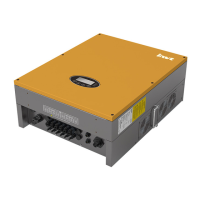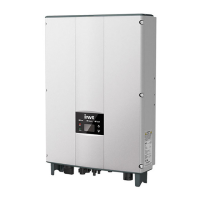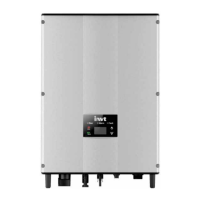Why is my INVT iMars BG17KTR Inverter showing AC overvoltage?
- JJames PhelpsAug 20, 2025
AC overvoltage in your INVT Inverter is due to high voltage from the public grid.
Why is my INVT iMars BG17KTR Inverter showing AC overvoltage?
AC overvoltage in your INVT Inverter is due to high voltage from the public grid.
Why is my INVT Inverter showing AC undervoltage?
AC undervoltage in your INVT Inverter is caused by low voltage from the public grid.
What causes input overvoltage in INVT Inverter?
Input overvoltage in your INVT Inverter is due to DC input overvoltage.
What does output short-circuit mean on my INVT iMars BG17KTR?
Output short-circuit on your INVT Inverter means there is a short-circuit at the output.
What causes input overcurrent in my INVT iMars BG17KTR Inverter?
Input overcurrent in your INVT Inverter is due to DC input overcurrent.
What does AC overcurrent mean for INVT Inverter?
AC overcurrent in your INVT Inverter indicates an internal AC overcurrent situation.
What causes AC overfrequency in INVT Inverter?
AC overfrequency in your INVT Inverter is due to high frequency from the public grid.
What causes AC underfrequency in INVT iMars BG17KTR?
AC underfrequency in your INVT Inverter is due to low frequency from the public grid.
What does huge leakage current mean in my INVT Inverter?
A huge leakage current in the INVT Inverter indicates a substantial leakage current within the system or the inverter itself.
What does data consistency fault mean for INVT Inverter?
A data consistency fault in your INVT Inverter indicates inconsistent grid voltage, frequency, leakage current, or AC/DC injection.
Critical safety rules for installation, operation, and maintenance of the inverter.
Safe procedures for receiving, unpacking, and physically installing the inverter.
Safety precautions specific to operating the inverter while connected to the grid.
Safety measures required during routine maintenance and inspection of the inverter.
Guidelines for selecting an appropriate and safe installation location for the inverter.
Procedures for the physical mounting of the inverter onto its bracket.
Specific mechanical installation steps for the three-phase inverter model.
Detailed instructions for wiring and making electrical connections to the inverter.
Step-by-step guide for connecting the DC input from solar modules.
Detailed instructions for connecting the AC output for various inverter models.
Pre-operation checks required to ensure the inverter is ready for use.
Step-by-step process for starting and managing the grid-tied operation mode.
Procedures for safely shutting down the inverter for maintenance or troubleshooting.
Reviewing historical fault records and codes for troubleshooting purposes.
Critical safety rules for installation, operation, and maintenance of the inverter.
Safe procedures for receiving, unpacking, and physically installing the inverter.
Safety precautions specific to operating the inverter while connected to the grid.
Safety measures required during routine maintenance and inspection of the inverter.
Guidelines for selecting an appropriate and safe installation location for the inverter.
Procedures for the physical mounting of the inverter onto its bracket.
Specific mechanical installation steps for the three-phase inverter model.
Detailed instructions for wiring and making electrical connections to the inverter.
Step-by-step guide for connecting the DC input from solar modules.
Detailed instructions for connecting the AC output for various inverter models.
Pre-operation checks required to ensure the inverter is ready for use.
Step-by-step process for starting and managing the grid-tied operation mode.
Procedures for safely shutting down the inverter for maintenance or troubleshooting.
Reviewing historical fault records and codes for troubleshooting purposes.











